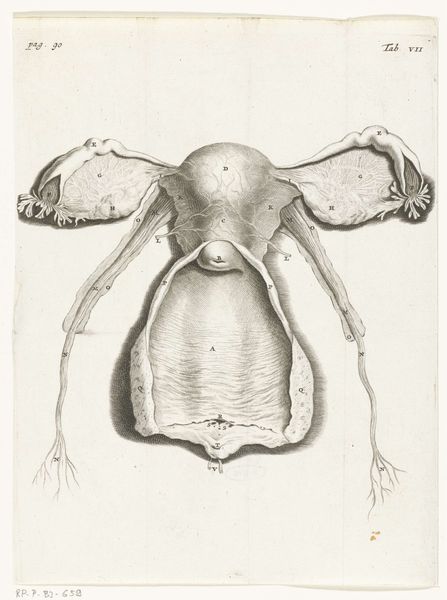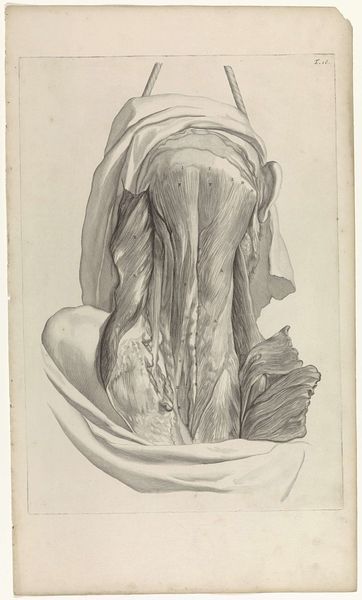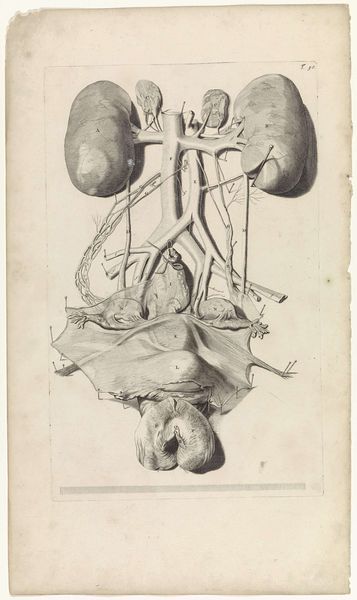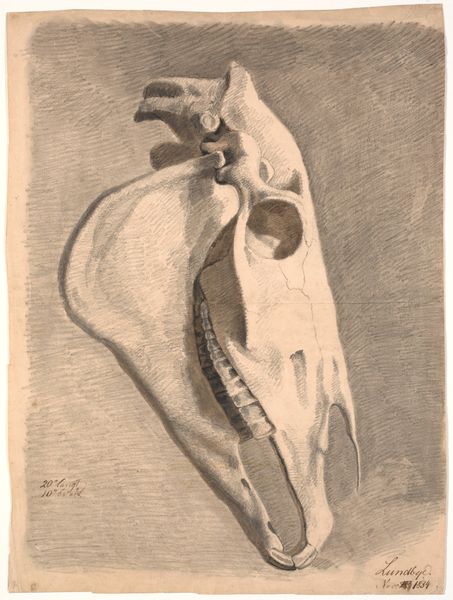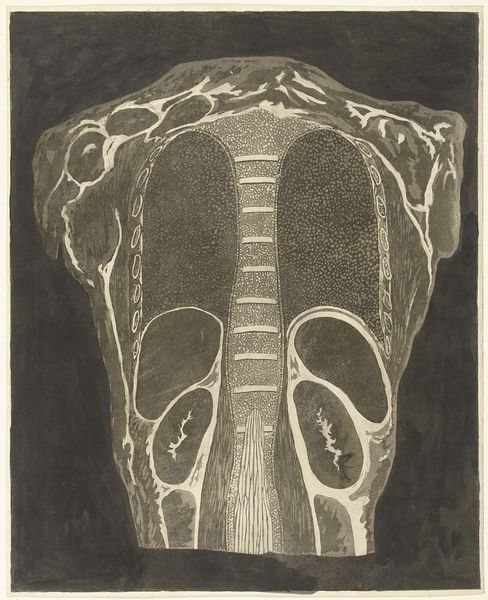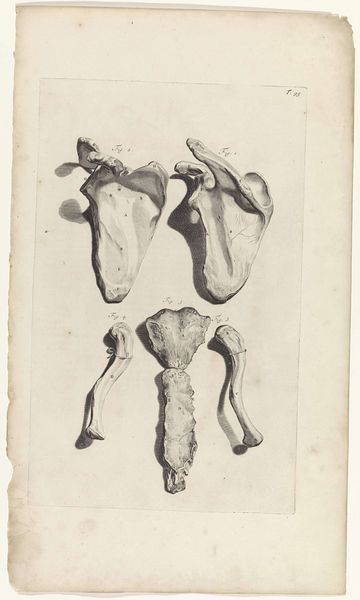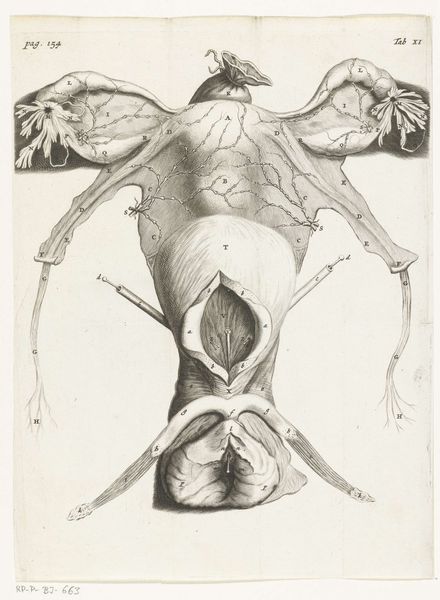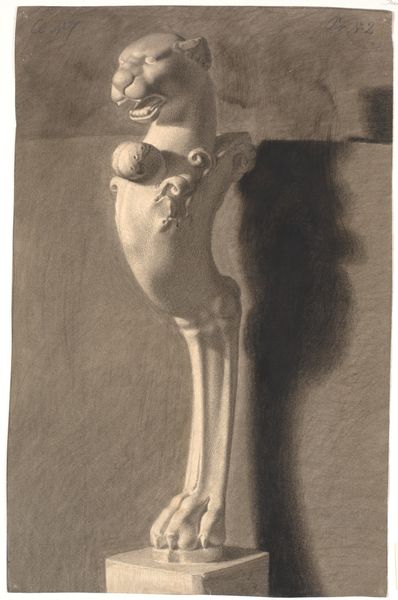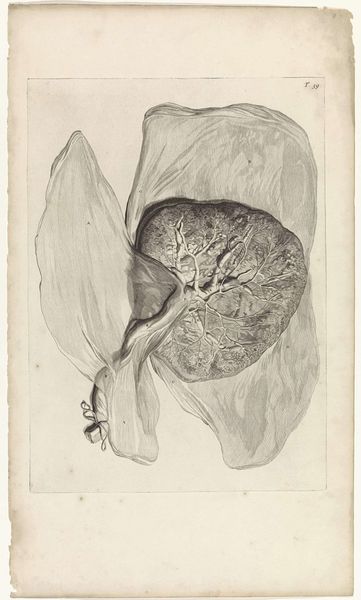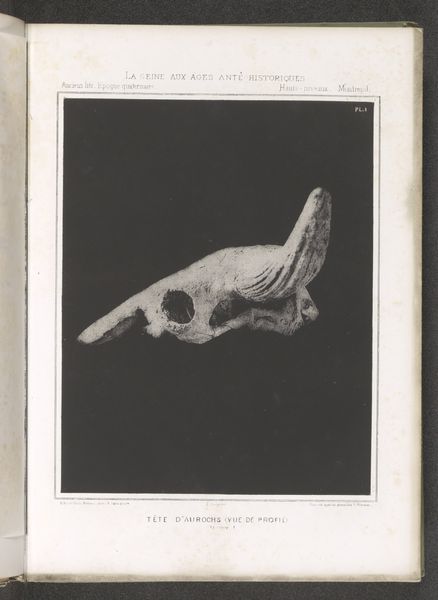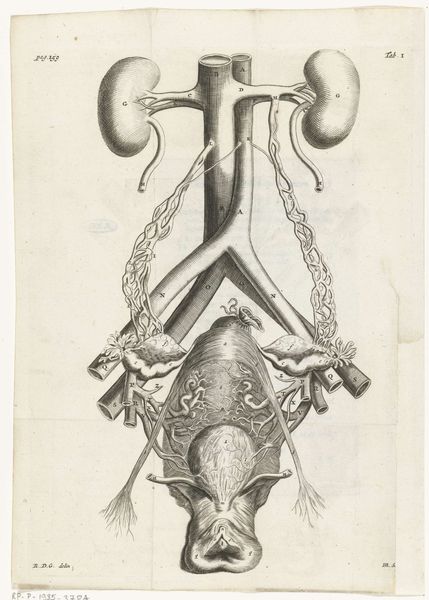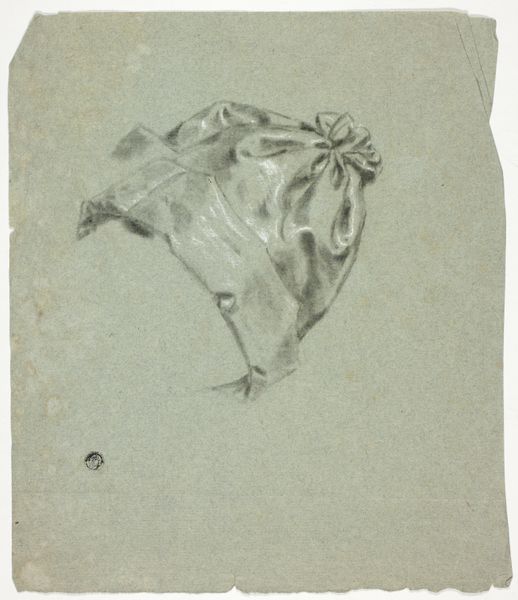
drawing, paper, pencil
#
pencil drawn
#
drawing
#
toned paper
#
facial expression drawing
#
light pencil work
#
pencil sketch
#
caricature
#
paper
#
portrait reference
#
pencil drawing
#
pencil
#
portrait drawing
#
pencil work
#
academic-art
#
realism
Dimensions: height 572 mm, width 410 mm
Copyright: Rijks Museum: Open Domain
Curator: Well, isn't this a fascinating work. This pencil drawing, titled "Baarmoeder", was rendered onto paper by Richard Purcell around 1757. Editor: Whoa. Okay, that's… intense. I mean, just the starkness of it, the scale against that muted background...it’s oddly unsettling but captivating. It looks like some bizarre, alien landscape. Is this, like, a study or something? Curator: Precisely! Purcell created this anatomical drawing as a study piece. Consider the context; in the 18th century, accurate depictions of the human body were invaluable for medical and artistic understanding. Note the commitment to Realism despite what is at play here. Editor: Okay, "invaluable" is putting it lightly. It’s also kinda wild to see something so intimately internal, dissected, almost proudly displayed. I keep getting snagged on this notion of visibility…making the invisible, visible… it almost feels transgressive for its time, maybe? Curator: That’s a great point. Representations like this, while scientific, also touch on deeply rooted societal anxieties surrounding the female body. Notice the intricate details – every vein, every curve rendered with such care. Even in a seemingly clinical depiction, emotional weight surfaces. Editor: The realism combined with the kind of muted, almost melancholic tone of the paper gives it an incredibly…fragile presence. I wonder what someone encountering this drawing back in the day would’ve felt? Curiosity mixed with, well, possibly a bit of horror? I mean, are those… growths on the side? Curator: One could well assume so. The emotional and cultural reaction likely spanned a wide spectrum. Think about what was culturally acceptable—or taboo. But beyond shock value, there's a deeper, undeniable symbolic force—it is, after all, about creation, origins, what Jung might term the ‘primordial feminine’. Editor: Hmm. That does hit right. This feels… oddly honest. There is the clinical, academic nature but at its core this is really about where everything begins, like a seed in soil. All these squiggly lines showing life on the interior are reaching to connect, grow, transform, and nourish. Curator: Yes! By bringing it to the public eye—then and now in places like the Rijksmuseum—this study transcends a mere clinical illustration. Editor: I'll tell you what, I definitely won't look at toned paper and pencils the same way again.
Comments
No comments
Be the first to comment and join the conversation on the ultimate creative platform.
